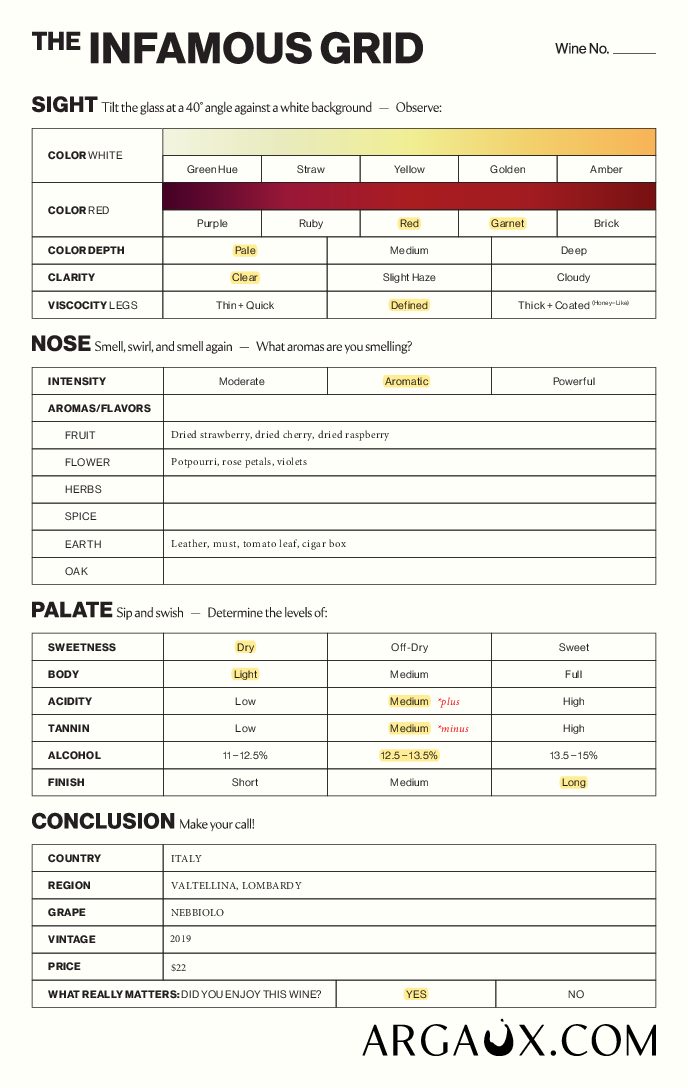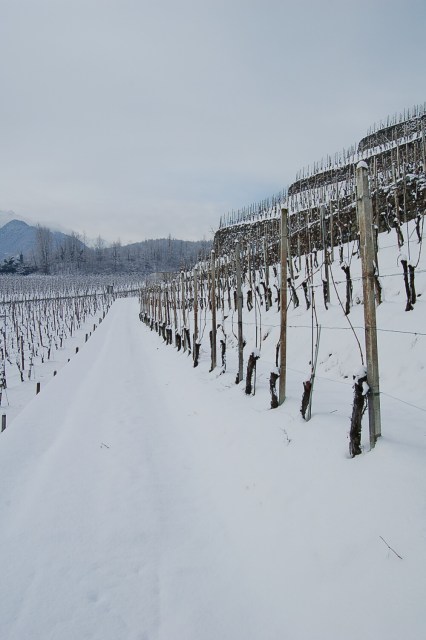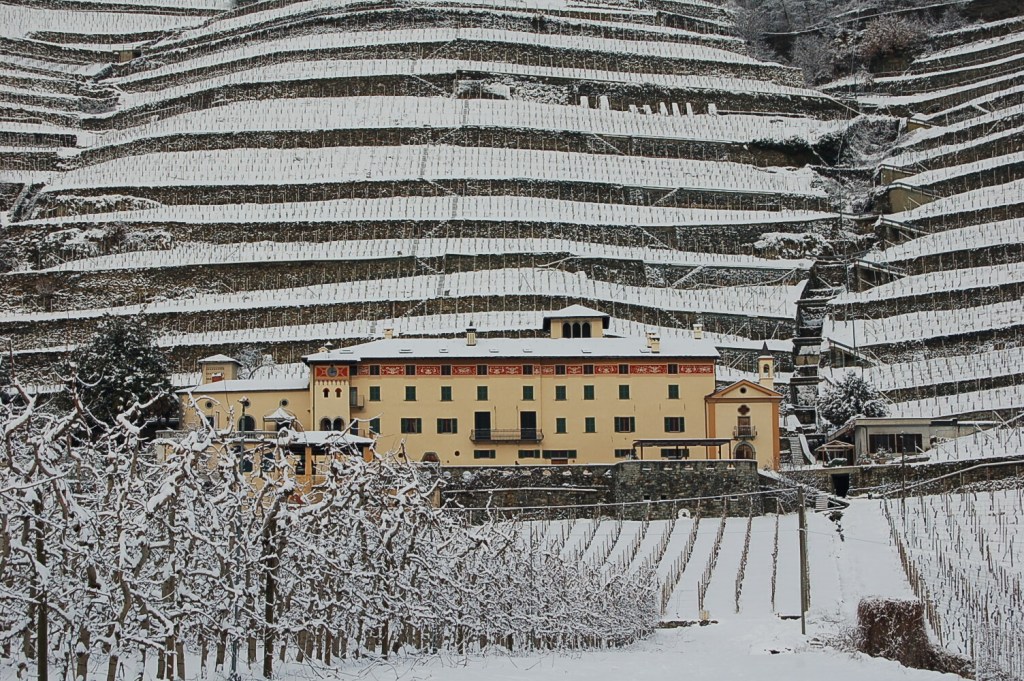2019 Casa Vinicola Triacca ‘Gaux Dopo’ Nebbiolo
This Alpine Nebbiolo is energetic, zippy, and remarkably fresh. The stainless steel fermentation maintains the wine’s bright fruit character, floral quality, and natural suppleness.
Sustainable farming practices and only 100 cases produced!
$22.00
Out of stock
Pairs with
The “La Gatta” estate was originally built in the 1500s as a Dominican monastery and was later purchased as a summer home for the aristocratic de Gatti family, from which the name derives. The Triacca family acquired the old monastery in 1969, which is surrounded by 13 hectares of vigorous vines grown on the steep hillsides of the Italian Alps. In 1987, Domenico Triacca acquired 2,000 square meters of vineyards in Valgella, one of the most highly sought after vineyard areas in Valtellina and built himself a small cellar to start producing and aging wines from his own vineyards. Today, Lucca Triacca runs the estate and is known as one of the most innovative Valtellina producers.
Valtellina lies in an Alpine valley in the northern part of the country in the Lombardy region. It actually forms part of the border between Italy and Switzerland and historically has been Swiss and Austrian territory before becoming part of Italy in 1859. The area benefits from a cool, mountain climate, though ‘La Breva,’ a gentle wind that originates over Lake Como, moves warm air into the valley and helps promote pollination in the spring. The vineyards lie on extremely steep slopes and tiny terraces (similar to the Mosel or Alto Adige) requiring it all to be worked by hand. Some suggest that Nebbiolo may have even originated in Valtellina! Today, it is known for its bright, cherry-scented Nebbiolo, known here as Chiavennasca (after the nearby town of Chiavenna).
“Nebbiolo from Valtellina has always been one of my favorite expressions of this grape. It’s Alpine wine; a much lighter and fresher version of your typical Nebbiolo from Piedmont that you might be more familiar with. They are high acid, food-friendly wines that are often significantly more affordable than your average Barolo. These wines are great with good company, a cheese & charcuterie plate, and some light pasta.” – Lexi Jones, Director of Imports
Related Items
-
2023 Domaine Marc Portaz Vin de Savoie ‘Apremont’ Tête de Cuvée
$22.00This crisp white from the French Alps is a true Apres Ski! France’s most mountainous region, the vines are 30 to 50-years-old and grown on the site of an ancient avalanche. It has similar fruit aromas to Sancerre and flavors as complex and mineral-driven as Chablis.
Sustainable farming practices, hand-harvested and native yeast fermentation.
-
Liquore delle Sirene Aperitivo Americano Rosso
$40.00This aperitivo is made from organically-farmed Trebbiano di Soave and Garganega grapes, as well as local herbs from Lake Garda, Italy. No chemicals or artificial coloring are used.
This is an aperitivo (think Aperol) but unlike Aperol, is not an industrial, mass produced product.
HOW TO DRINK IT
Enjoy on the rocks, in a Spritz, negroni, or in a paloma with your favorite tequila or mezcal. -
2019 Domaine Alain Burguet Gevrey-Chambertin ‘Lavaux Saint Jacques’ Premier Cru
$225.00This rustic Pinot Noir hails from a premier cru climat just west of Gevrey-Chambertin. The palate is medium-bodied with rich and concentrated flavors, nice acidity, and integrated tannins. Aged for 19 months in barrel (50% new oak).
Like all of Burguet’s wines, this bottle is produced from organic (converting to biodynamic) fruit, native yeasts, and is bottled unfined / unfiltered. Only 50 cases produced.
-
NV Sorelle Bronca Prosecco Treviso DOC ‘Modì’
$25.00‘Modì’ stands out from typical, mass-produced Prosecco because it’s handcrafted by the Bronca sisters from start to finish. With a focus on biodiversity and minimal intervention, this low-alcohol, bone-dry (zero sugar added) sparkler proves that exceptional quality doesn’t have to come at a high price—how refreshing!
Certified organic farming practices, hand-harvested, aged for 4 months on the lees and only 2,500 cases produced.










